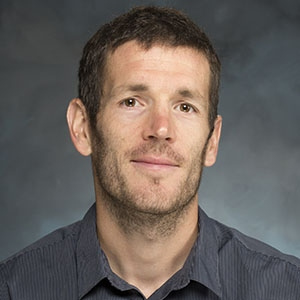Marius Millot

August 26, 2020
What do you like about working at the Lab?
I like the intellectual challenge of trying to invent and optimize an experimental procedure to solve open problems. With many resources both in terms of facilities and highly skilled staff, the Lab is a great place to do challenging experimental science. The Lab is also the leading institution worldwide in my area of research, which uses giant lasers to generate extreme conditions of pressures and temperatures in very brief pulses. This is THE place to do science at the frontiers!
What do your day-to-day work activities include?
I sometimes go to our target preparation laboratory to do hands-on work, but my work is mostly behind my computer and through web meetings. Our experiments on giant lasers like the National Ignition Facility (NIF) involve large teams of people including scientists, engineers, and technicians. Coordinating and choreographing all these activities takes a lot of energy and attention.
I also wear quite a few hats: in addition to leading experiments on Omega and NIF and writing computer code to design experiments and analyze data, I lead a Laboratory Directed Research and Development project, help people design and analyze their experiments with NIF’s VISAR diagnostic, and mentor students, postdocs, and early career scientists. This makes for busy days!
A big fraction of my research targets the inertial confinement fusion effort at the Lab, so I keep up with what others are doing in that area. Finally, as a member of the scientific community, I do synergistic activities like peer-reviewing articles and research grants as well as reaching out through media interviews, NIF tours, and scientific networking.
What advice would you give to a new employee at the Lab?
Go meet people in other areas to learn about what they are doing. Tour the facilities onsite such as NIF. Learn about the Lab’s missions.
What is one project you’re really proud to have worked on?
Overall, I like to think that my contributions are helping the grand challenge of getting ignition at NIF. On a smaller scale, I was fortunate to discover the superionic water ice phase using dynamic compression. Despite the many challenges in designing the experiments, analyzing the data, and getting the work published, this work gathered quite a bit of attention and has been rewarding.
What is your educational or career background?
I studied physics back in France. My PhD was in condensed matter physics, developing new experiments under high pressure and pulsed magnetic fields. I started collaborating with LLNL when I moved to Berkeley to complete my postdoc. I’ve worked at LLNL for 6 years.
What inspired you to go into your field of work?
I like physics as a tool to explain what surrounds us and how things work in general. How I got into laser-driven compression is serendipity, but I really enjoy it because studying the properties of matter at extreme pressures and temperatures is an expanding area of research with many applications, in particular for planetary science and astronomy. We can recreate the conditions inside planets and stars in the laboratory!
What do you do in your free time?
I like outdoor activities like cycling, running, and hiking. A lot of my creative breakthroughs happen during my lunch bike rides in the hills around Livermore! I also like cooking and baking bread.
Learn more about Marius:
Biography | Spotlight article




